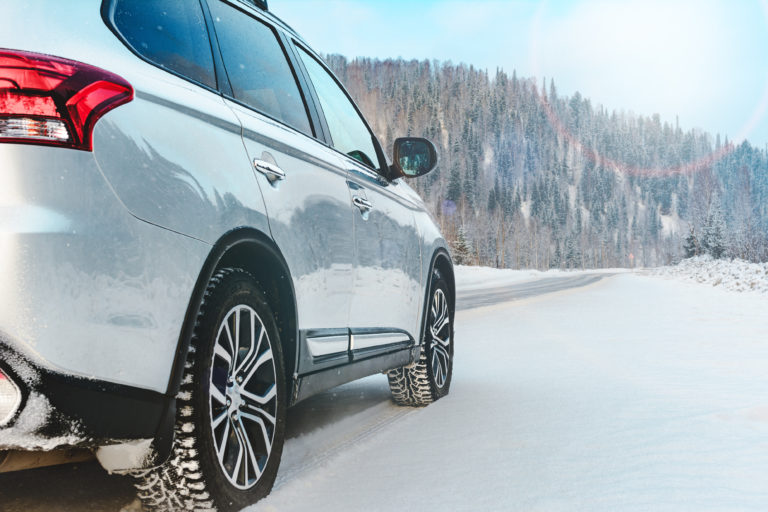
The following is a press release dated January 14, 2013 from the National Highway Traffic Safety Administration (“NHTSA”) website provided by Andrew F. Fick, Esquire, with the law firm of Liever, Hyman & Potter, P.C., in Reading, Berks County, Pennsylvania.
WASHINGTON – As the winter driving season gets underway, the National Highway Traffic Safety Administration is urging motorists to take precautionary measures to ensure that all vehicles are in optimal driving condition and properly equipped, especially in inclement weather. In particular, NHTSA urges owners to take their vehicles in for a tune-up and to conduct routine maintenance – ensuring tires are in top shape and windshield wipers and defrosters work properly.
NHTSA safety recommendations include the following:
- Visit your mechanic for a periodic safety inspection and to address routine vehicle maintenance. Have your vehicle checked thoroughly for fluid leaks and any other needed parts, repairs, or replacements.
- Have your starting system battery checked for sufficient voltage. When the temperature drops, so does battery power. Be aware that it takes more cranking power to start your vehicle in cold weather. Also, be sure the connections are properly tightened and free of corrosion. If necessary, clean them with a solution of baking soda and water.
- Make sure you have enough coolant in your vehicle and that it’s designed to withstand the winter temperatures you might experience in your area. A 50/50 mix of coolant to water is sufficient for most regions of the country. See your vehicle owner’s manual for specific recommendations.
- If your engine cooling system hasn’t been flushed (draining the system and replacing the coolant) for several years, have it done now. Over time, the rust inhibitors in antifreeze break down and become ineffective. Coolant also needs to be refreshed periodically to remove dirt and rust particles that can clog the cooling system and cause it to fail.
- Make sure your windshield wipers and defrosters are working properly. Refill the windshield washer reservoir as needed with high-quality, “no-freeze” washer fluid.
- Before you drive, remove snow and ice from all of your vehicle’s windows and mirrors and keep them clean to maintain the best visibility. Also, be sure to clear snow and ice from your vehicle’s roof and hood to ensure good visibility for both you and following motorists.
- Check tire pressure and make sure each tire is filled to the vehicle manufacturer’s recommended inflation pressure, which is listed in your owner’s manual and on a placard located on the driver’s side doorjamb (called the “B-pillar”). If a vehicle does not have a B-pillar, then the placard is placed on the rear edge of the driver’s door. Tire pressure drops as the temperature drops. Properly inflated tires ensure optimum tire performance and optimum vehicle driving range.
- Keep a tire pressure gauge in your vehicle at all times and check pressure when tires are “cold” – meaning they haven’t been driven on for at least three hours. Check your tire tread depth and make sure you are using a tire appropriate for the winter driving conditions you may encounter. If the winter season means sleet, slush and snow-covered roads in your area or where you’re traveling to, consider replacing tires when they reach approximately 5/32″ of remaining tread depth. If you regularly encounter severe winter driving conditions, you may consider a dedicated winter/snow tire for optimum traction.
- Stock your vehicle with essentials in the event of an emergency including a snow shovel, broom, ice scraper, jumper cables, flashlight, warning devices (flares, reflective markers, etc.) and blankets for protection from the cold. A mobile phone, water, food, and any necessary medicines may prove useful if you become stranded.
- If road conditions are hazardous, wait until road and weather conditions improve before venturing out in your vehicle.
- If you do become stranded, don’t run your car for long periods with the windows up or in an enclosed space to avoid asphyxiation from carbon monoxide poisoning. If you must run your vehicle, clear the exhaust pipe of any snow and run it only sporadically – just long enough to stay warm.
- Motorists are also reminded to make safety their number one priority when they drive by bringing in their vehicles for a free fix when it’s been recalled; never driving distracted or drunk; wearing seat belts and obeying state laws.
- Additional safety tips
Liever, Hyman & Potter, P.C. serves the injured, and their families, in Reading, Pottsville and throughout Pennsylvania. The lawyers there handle personal injury claims, including automobile and truck accident claims.

